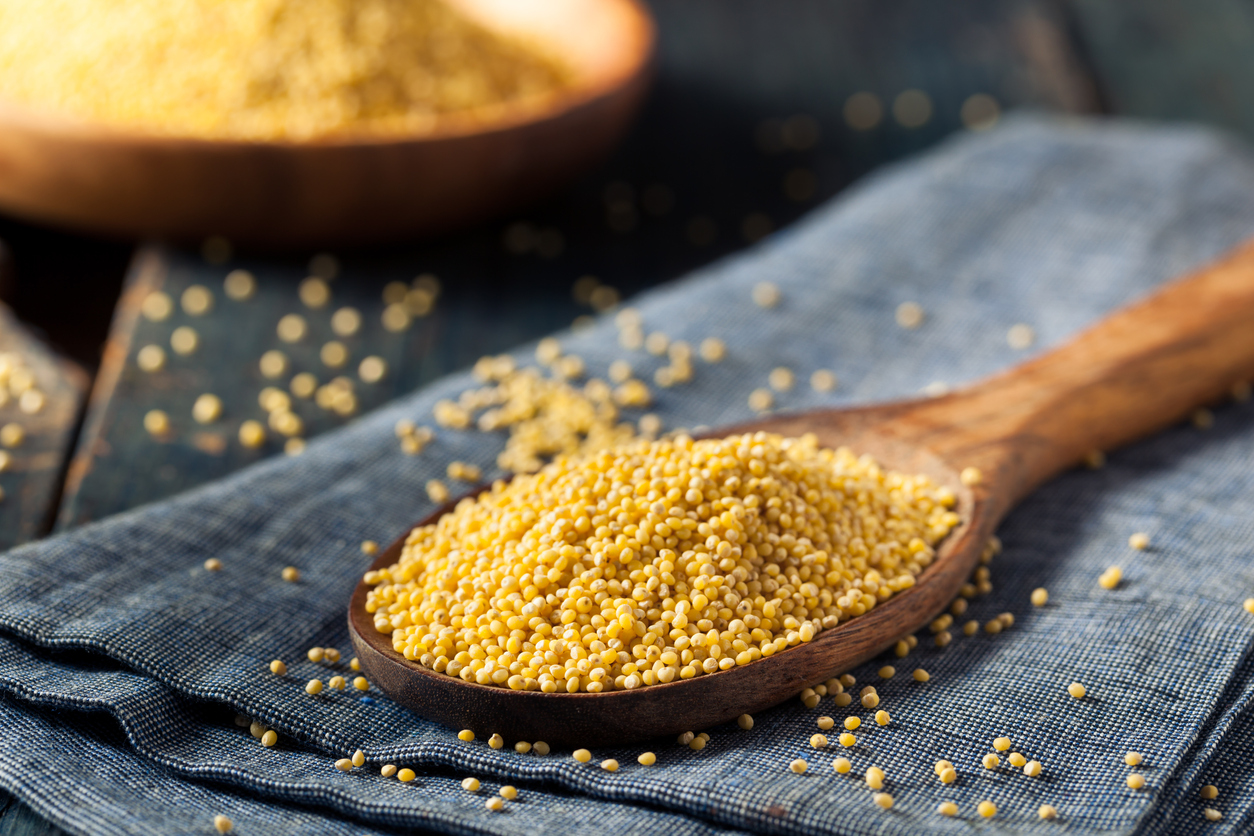The Economics of Millet Production: Factors Influencing Price Volatility
The Economics of Millet Production: Factors Influencing Price Volatility
Welcome to our latest blog post, where we delve into the fascinating world of millet production and explore the factors that contribute to its price volatility. Millets have long been a staple crop for many cultures around the globe, providing essential nutrition and livelihoods for millions. However, their economic dynamics are often overlooked or misunderstood. Join us as we unravel the intricate web of influences that shape millet prices, from climate change and government policies to market demand and international trade. Whether you’re an agricultural enthusiast or simply curious about how global economics impact your plate, this article promises to be enlightening and thought-provoking. So grab a cup of coffee (or perhaps some millet porridge) as we embark on this journey exploring the economics behind one of humanity’s oldest grains!
Introduction to Millet Production and its Importance in the Global Food Market
Introduction to Millet Production and its Importance in the Global Food Market
Millet is a small-seeded grain that has been cultivated for thousands of years by various cultures around the world. It is an important crop due to its ability to grow in arid and semi-arid regions, making it a staple food for millions of people living in these areas. In recent years, there has been a growing interest in millet production as it offers numerous health benefits and is considered a sustainable crop.
Millet production plays a crucial role in the global food market, with its demand increasing steadily over the years. According to the United Nations Food and Agriculture Organization (FAO), global millet production has grown from 21 million tonnes in 1961 to over 28 million tonnes in 2018. This increase can be attributed to several factors such as population growth, changing dietary preferences, and climate change.
Factors Influencing Price Volatility
The price volatility of millet is influenced by various economic factors that impact the overall supply and demand of this crop. Understanding these factors is essential for farmers, policymakers, and consumers alike as they play a significant role in shaping both domestic and international markets.
1) Weather Conditions: As mentioned earlier, millet is known for its ability to grow well in dry conditions. Therefore, any changes in weather patterns can significantly impact its production. Extreme weather events such as droughts or floods can cause fluctuations in supply leading to price volatility.
Understanding Price Volatility and its Impact on Millet Producers
Understanding Price Volatility and its Impact on Millet Producers
Price volatility refers to the fluctuation or instability of prices in a particular market. In the context of millet production, price volatility is a common phenomenon that has a significant impact on millet producers. In this section, we will explore the concept of price volatility and its implications for millet producers.
What Causes Price Volatility?
There are several factors that can lead to price volatility in the millet market. The most prominent factor is supply and demand. When there is an increase in demand for millet, prices tend to rise due to limited supply. Similarly, when there is an oversupply of millet, prices tend to fall as sellers compete with each other for buyers.
Another factor that contributes to price volatility is weather conditions. Millet production heavily relies on favorable weather conditions such as adequate rainfall and temperature. Any changes in weather patterns can affect crop yields, leading to fluctuations in prices.
Economic policies also play a crucial role in price volatility. Government interventions such as subsidies, tariffs, and trade restrictions can influence the supply and demand of millets, consequently affecting prices.
Impact on Millet Producers
Price volatility has a significant impact on millet producers at various stages of production – from planting to selling their crops.
Factors Affecting Millet Prices: Climate, Demand, Supply, and Government Policies
Millet is a versatile and nutritious grain that has been an essential part of many traditional diets for centuries. It is also becoming increasingly popular in modern times due to its health benefits, gluten-free properties, and sustainability as a crop. However, like any other agricultural commodity, millet prices are subject to volatility due to various factors such as climate conditions, demand and supply dynamics, and government policies.
Climate plays a crucial role in determining the production and prices of millet. Millet is primarily grown in semi-arid regions where water availability can be limited. In these areas, changes in weather patterns such as droughts or floods can have a significant impact on millet production. For example, if there is a prolonged period of drought during the growing season, it can lead to lower yields and reduced quality of the crop. As a result, there will be less supply of millet in the market leading to higher prices.
On the other hand, an ideal climate with adequate rainfall and moderate temperatures can result in optimal growth conditions for millet crops leading to higher yields and better quality grains. This will increase the supply of millet in the market resulting in lower prices.
Case Studies of Countries with High Price Volatility in Millet Production
Millet is a staple crop for millions of people around the world, particularly in developing countries. However, millet production and pricing has been characterized by high levels of volatility, which can greatly affect the livelihoods of farmers and food security within a country. In this section, we will examine case studies of countries that have experienced significant price volatility in millet production.
1. India:
India is the largest producer and consumer of millets in the world, with over 8 million hectares of land dedicated to its cultivation. The country produces various types of millets such as pearl millet, finger millet, and sorghum among others. Despite being an important crop for both consumption and export, India has faced severe price fluctuations in recent years.
One major factor contributing to price volatility in India is climate variability. Millet production is highly dependent on rainfall patterns, and any deviation from normal can result in reduced yields leading to higher prices. In 2019, India experienced one of its worst droughts in decades which led to a decline in the production of all major crops including millets. This resulted in a sharp increase in prices as demand remained constant.
Another issue affecting price stability is government policies and interventions. The Indian government has implemented various schemes such as minimum support prices (MSP) to protect farmers from market fluctuations. However, these policies are not always effective as they do not cover all varieties of millets and often fail to keep up with rising input costs.
Strategies for Mitigating Price Volatility: Diversification, Storage Techniques, and Trade Policies
Price volatility is a major concern for farmers and producers in the millet industry. Fluctuations in market prices can have a significant impact on their profitability and financial stability. However, there are strategies that can be implemented to mitigate price volatility and help stabilize the market for millet.
1. Diversification of Crops:
One effective strategy for mitigating price volatility in the millet industry is through crop diversification. This means growing different types of crops alongside millet, such as legumes or other grains, to reduce reliance on a single crop. By diversifying their crops, farmers can spread out their risk and ensure a more stable income even if the market price for millet fluctuates.
2. Storage Techniques:
Another important factor in mitigating price volatility is proper storage techniques. Post-harvest losses due to poor storage facilities or pest infestation can significantly affect the supply of millet in the market, leading to fluctuations in prices. Therefore, investing in good storage facilities and implementing proper storage techniques can help farmers store their produce for longer periods without spoilage, thus maintaining a steady supply throughout the year.
3. Trade Policies:
Trade policies play a crucial role in regulating price volatility by controlling imports and exports of commodities like millet. In countries where trade policies are not well-regulated, sudden surges or drops in imports/exports can greatly influence domestic prices and disrupt the market equilibrium.
The Role of Technology in Reducing Price Volatility
The Role of Technology in Reducing Price Volatility
Millet production has been an important source of income and food security for many rural communities around the world. However, one of the major challenges faced by millet farmers is price volatility. The price of millet can fluctuate greatly due to various factors such as weather conditions, market demand, and supply chain inefficiencies. This makes it difficult for farmers to plan their production and invest in their farms with confidence.
Fortunately, technology has played a significant role in reducing price volatility in the millet industry. In this section, we will discuss some key ways in which technology has helped stabilize prices and improve the overall economics of millet production.
1. Weather Forecasting
Weather plays a crucial role in determining the success or failure of any agricultural crop. With unpredictable weather patterns becoming more common due to climate change, farmers are facing increased risks and uncertainties when it comes to their crops’ yield and prices. However, advancements in weather forecasting technology have allowed farmers to plan better for potential weather-related risks.
With accurate weather predictions, farmers can make informed decisions about when to plant their crops, how much water and fertilizer should be applied, and when they should harvest. This helps them mitigate potential losses caused by adverse weather conditions, ultimately leading to more stable prices for their produce.
Future Outlook
Future Outlook:
The future outlook for millet production is promising, but also faces some challenges. The ever-growing demand for healthier and more sustainable food options has led to an increase in the consumption of millets, especially in developed countries. This trend is expected to continue as more people are becoming aware of the nutritional benefits of millets.
One key factor that will impact the future price volatility of millets is climate change. Millet production is highly dependent on weather conditions, and any extreme weather events such as droughts or floods can significantly affect crop yields and therefore prices. With climate change leading to more frequent and severe weather patterns, it is crucial for farmers to adopt sustainable farming practices and invest in technologies that can help mitigate these effects.
Another important aspect that will shape the future outlook for millet production is government policies and subsidies. Many governments around the world have started recognizing the potential of millets in addressing food security and promoting healthy diets. As a result, several initiatives have been launched to support small-scale farmers in growing millets through subsidies, training programs, and market linkages. These efforts are expected to boost production levels and stabilize prices.
On a global scale, trade policies and international market dynamics will also play a significant role in influencing the price volatility of millets. With increasing globalization, there has been a rise in competition among countries producing different types of grains. This can lead to fluctuations in prices depending on supply-demand dynamics globally.








Comments are closed.